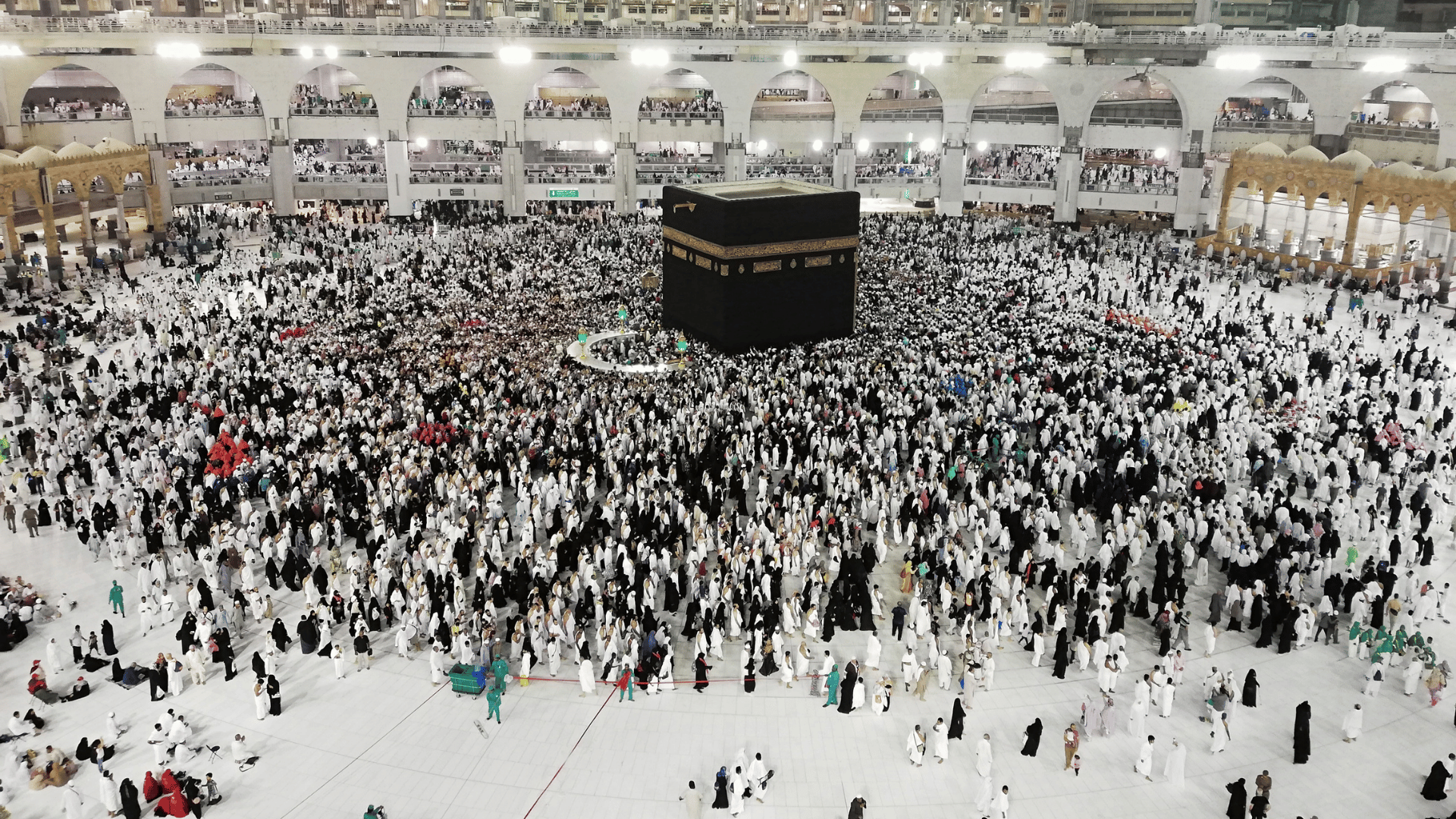
Hajj
What is Hajj (Pilgrimage)?
Hajj is one of the Five Pillars of Islam and is an annual pilgrimage to the holy city of Mecca in Saudi Arabia. It is a religious duty that must be carried out by every able-bodied and financially capable Muslim at least once in their lifetime, provided they can undertake the journey safely. Hajj occurs during the Islamic month of Dhu al-Hijjah, specifically during the first ten days, and is a significant event in the life of a Muslim.
Key aspects of Hajj include:
- Intention (Niyyah): Pilgrims must have a sincere intention to perform Hajj purely for the sake of Allah. The intention is a crucial aspect of the pilgrimage.
- Ihram: Before entering Mecca, pilgrims enter a state of consecration called Ihram. This involves wearing special white garments for men and specific modest clothing for women. The Ihram signifies a state of purity and equality among all pilgrims, emphasizing the spiritual journey over worldly distinctions.
- Tawaf: Upon reaching Mecca, pilgrims perform Tawaf, which involves circumambulating the Kaaba, the cube-shaped structure at the center of the Masjid al-Haram. Pilgrims walk around the Kaaba seven times in a counterclockwise direction.
- Sa’i: After Tawaf, pilgrims perform Sa’i, which involves walking back and forth between the hills of Safa and Marwah seven times. This ritual commemorates the actions of Hagar, the wife of Prophet Ibrahim (Abraham), searching for water for her son Ishmael.
- Arafat: Pilgrims then travel to the plain of Arafat, where they stand in prayer and reflection. This day, known as the Day of Arafat, is considered the most crucial day of Hajj.
- Muzdalifah: After Arafat, pilgrims spend the night at Muzdalifah, where they engage in prayers and collect pebbles for the ritual of Stoning the Devil.
- Stoning the Devil (Rami al-Jamarat): Pilgrims throw pebbles at three symbolic pillars representing Satan. This ritual symbolizes the rejection of evil and temptation.
- Eid al-Adha: The culmination of Hajj coincides with the Islamic festival of Eid al-Adha, which commemorates the willingness of Prophet Ibrahim to sacrifice his son as an act of obedience to God. Muslims around the world also celebrate Eid al-Adha with rituals such as animal sacrifice, symbolic of Ibrahim’s sacrifice.
- Halq or Taqsir: After the Stoning the Devil ritual, male pilgrims usually shave their heads (Halq) or trim their hair (Taqsir) to symbolize humility and equality.
